UPSC Exam > UPSC Notes > Geography for UPSC CSE > Cheat Sheet: Biogeography: World Environment
Cheat Sheet: Biogeography: World Environment | Geography for UPSC CSE PDF Download
Genesis of Soils
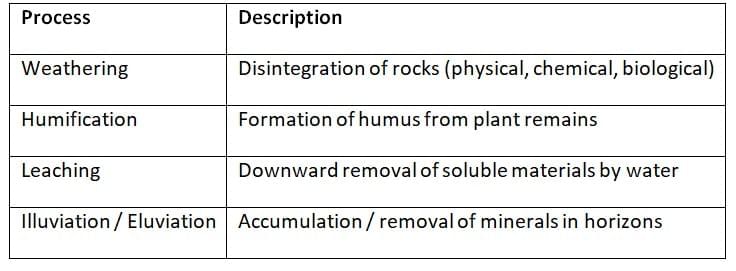
Classification & Distribution of Soils
Based on Origin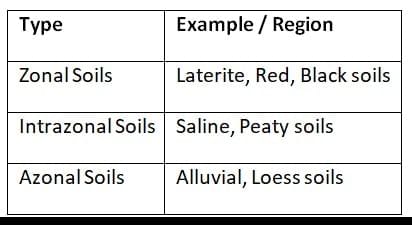
Indian Soils Table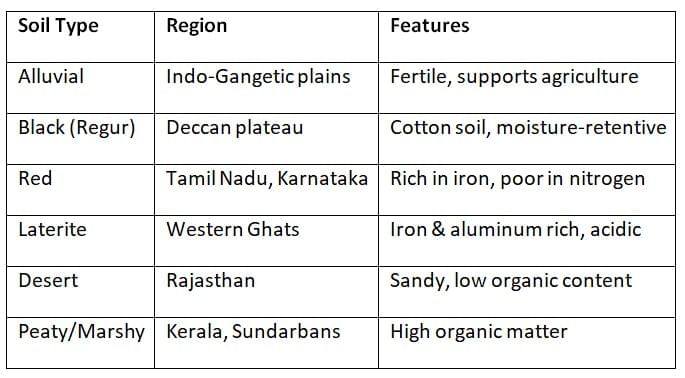
Soil Profile
Typical Horizons (Top to Bottom)
- O-horizon: Organic matter
- A-horizon: Topsoil (minerals + humus)
- B-horizon: Subsoil (leached materials)
- C-horizon: Weathered parent rock
- R-horizon: Bedrock
Soil Erosion, Degradation & Conservation
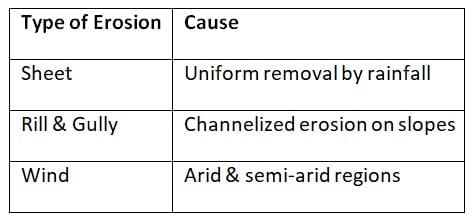
Soil Conservation Techniques
- Contour ploughing
- Terracing
- Shelterbelts
- Check dams
- Agroforestry
Factors Influencing Distribution of Plants & Animals
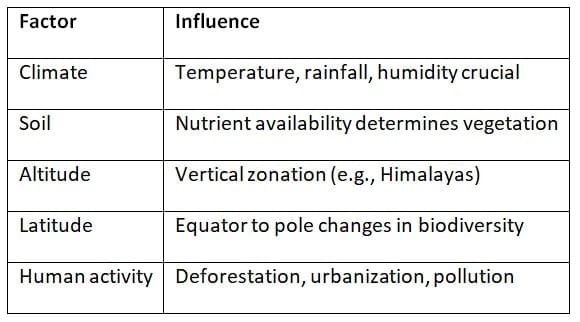
Deforestation: Problems & Conservation
Impacts
- Soil erosion
- Climate change
- Loss of biodiversity
- Disruption of water cycle
Conservation Measures
- Afforestation & Reforestation
- Forest Act implementation
- Wildlife sanctuaries & biosphere reserves
- People's participation (e.g., Chipko movement)
Social Forestry & Agroforestry
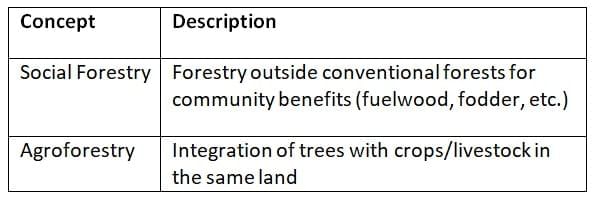
Wildlife Conservation
Key Aspects
- Threats: Poaching, habitat loss, climate change
- Acts: Wildlife Protection Act, 1972
- Initiatives: Project Tiger, Project Elephant
- Protected Areas: National Parks, Wildlife Sanctuaries, Biosphere Reserves
India's Hotspot Zones
- Himalayas
- Indo-Burma
- Western Ghats
- Sundaland (Nicobar Islands)
Major Gene Pool Centers
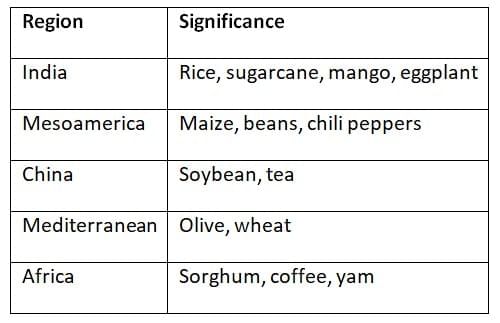
The document Cheat Sheet: Biogeography: World Environment | Geography for UPSC CSE is a part of the UPSC Course Geography for UPSC CSE.
All you need of UPSC at this link: UPSC
|
264 videos|875 docs|232 tests
|
FAQs on Cheat Sheet: Biogeography: World Environment - Geography for UPSC CSE
| 1. What are the main factors influencing soil formation? |  |
Ans. The main factors influencing soil formation include parent material, climate, topography, organisms, and time. Parent material provides the mineral content, while climate affects weathering and organic matter decomposition. Topography influences drainage and erosion, organisms contribute to organic matter and nutrient cycling, and time allows for the development of distinct soil horizons.
| 2. How is soil erosion classified and what are its major causes? |  |
Ans. Soil erosion is classified into two main types: water erosion and wind erosion. Water erosion occurs through rainfall and surface runoff, leading to processes like sheet, rill, and gully erosion. Wind erosion primarily affects dry, loose soils in arid regions. Major causes include deforestation, overgrazing, poor agricultural practices, and urbanization, which remove vegetation cover and expose soil to erosive forces.
| 3. What are the layers of a typical soil profile? |  |
Ans. A typical soil profile consists of several layers, commonly referred to as horizons. The top layer, known as the O horizon, contains organic matter such as decomposed leaves. Below this is the A horizon (topsoil), rich in nutrients and organic content. The B horizon (subsoil) accumulates minerals leached from above. Finally, the C horizon consists of weathered parent material, and the bedrock lies beneath it.
| 4. What is the significance of wildlife conservation in maintaining ecosystem balance? |  |
Ans. Wildlife conservation is crucial for maintaining ecosystem balance as it helps preserve biodiversity, which contributes to ecosystem services such as pollination, water purification, and soil fertility. Protected wildlife populations also maintain food webs and prevent overpopulation of certain species, which can lead to habitat degradation. Conservation efforts ensure that ecosystems remain resilient and functional.
| 5. How does deforestation impact soil quality and what conservation measures can be taken? |  |
Ans. Deforestation negatively impacts soil quality by increasing erosion, reducing organic matter, and disrupting nutrient cycles. It leads to soil degradation and loss of fertility. Conservation measures include reforestation, agroforestry, and the implementation of sustainable land management practices to restore soil health and protect against erosion. Community involvement and education are also vital for effective conservation.
Related Searches
















